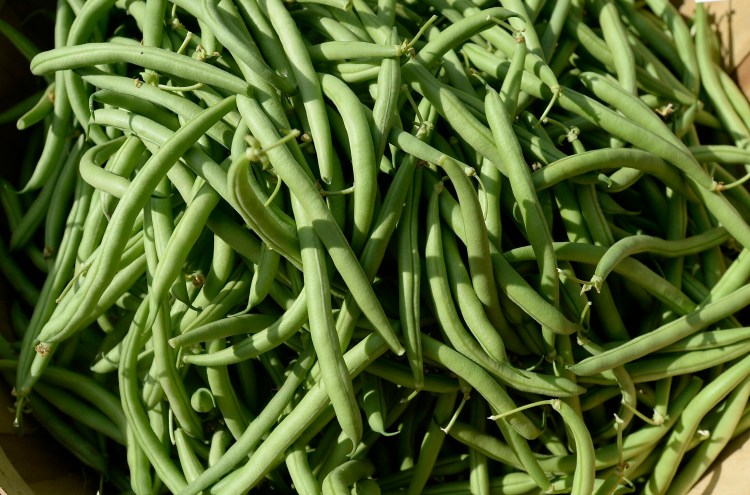Green beans should be about ready to harvest now, in mid-July. For many people, fresh green beans are a staple of summer dining.
My wife, Nancy, and I are not among them. If we have three meals of green beans each year, that would be enough. We are still eating fresh shelled peas, edible-pod peas, summer squash and zucchini, carrots and, soon we hope, peppers and tomatoes.
I’ve been trying to figure out our aversion to the garden staple. It’s not that it’s tough to grow.
Beans should be planted in late May, around Memorial Day. They like to be planted close together, with about 2 inches between the seeds, so the leaves protect neighboring plants from hot summer sun. They should be fertilized with whatever you use for the rest of your vegetables and harvested before the beans get too old. There are pests, but we’ve never run into them.
Nancy’s parents didn’t like beans, so she didn’t have them much growing up. My first paying job (other than delivering newspapers) was a couple of weeks picking beans for a local farmer when I was in grammar school, earning 25 cents for each 5-gallon pail filled. I don’t think that threw me off them, though.
Actually, we planted quite a few beans when we first started gardening. Nancy’s grandmother loved a variety called Low’s Champion, which at that time was sold by Allen, Sterling & Lothrop, and it did well for us.
It was a flat bean that could be eaten green when young, as summer shell beans when the pods got just a bit bigger and as a dried red bean for baked beans. By the time I knew Nancy’s grandmother, she cooked it only in its first stage, as green beans, but the versatility must have helped when she was feeding a household of eight.
Great Lakes Staple Seed Co., which still sells the variety, says it is an Abenaki bean, first sold commercially by Aaron Low Seed Co. in Boston in 1884.
“Numerous 6-inch flat pods that dangle from dwarf plants remain stringless and are sought for their classic beany flavor as snaps at the 65-day mark or shellies a few days later,” the Great Lakes catalog says. “They also are flavorful dry beans. An all-around versatile producer that does well in our Michigan garden.”
The only other online company that I know of that carries Low’s Champion is Annapolis Seed Co.
I have had decent luck growing Mitla and Coco Noir as black beans, and still have some stored in our cellar to be used in bean soup over the winter, so we aren’t growing any this year. Once the supply gets low, I’ll use some of those beans as seed.

Roasted Green Beans w/ Garlic + Ginger Juice. Maybe if he tried this recipe from our Green Plate Special column, Atwell would like green beans better. Shawn Patrick Ouellette/Staff Photographer
What I am growing is Masai Bush Haricot Vert. Nancy and I enjoyed the long, skinny and slightly curly French green beans during a trip to France last year, and I wanted to give them a try. Masai produces beans only 5 inches long, shorter than most other haricot vert, but it has the advantage of staying skinny and crisp longer than most other varieties, according to the Fedco catalog. For a couple who is going to eat fresh beans only three times a summer, I don’t want to be out picking them every day to be sure they don’t get too fat.
About five years ago, I went through a period of planting pole beans, which I liked because I could pick them without having to kneel down. But the pole beans never produced as well as bush beans, at least for us, and I had to set up the poles (which involved an extremely tall stepladder and a splitting maul used as a sledge hammer). I have never even tried yellow or wax beans. My mother used to serve those now and then – they made regular green beans seem like a gourmet treat.
For people who like beans a lot more than we do, succession planting works very well. You could still plant beans through early August and have a good chance of getting a crop before the first frost – at least in southern Maine.
I am hoping the haricot vert produce well for us, and that they remind me of France when we eat them a few weeks after I’m writing this column, with some small boiled potatoes from the garden, grilled salmon and maybe a Sancerre to go with it all.
If that doesn’t make us like the beans, I’ll plant more peppers instead, for next year.
TOM ATWELL is a freelance writer gardening in Cape Elizabeth. He can be contacted at: tomatwell@me.com
Copy the Story LinkSend questions/comments to the editors.



Success. Please wait for the page to reload. If the page does not reload within 5 seconds, please refresh the page.
Enter your email and password to access comments.
Hi, to comment on stories you must . This profile is in addition to your subscription and website login.
Already have a commenting profile? .
Invalid username/password.
Please check your email to confirm and complete your registration.
Only subscribers are eligible to post comments. Please subscribe or login first for digital access. Here’s why.
Use the form below to reset your password. When you've submitted your account email, we will send an email with a reset code.